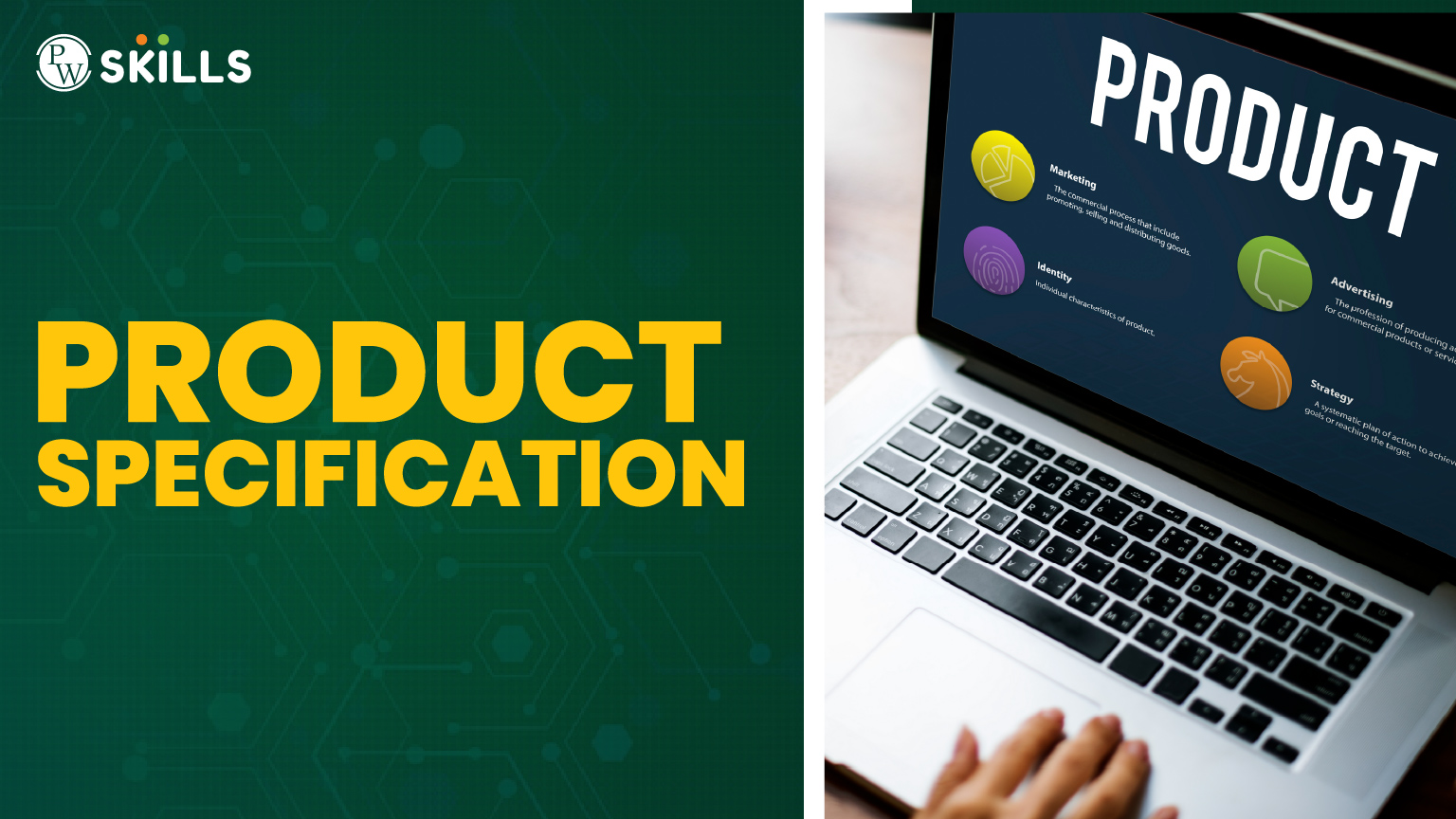Product Specs or Product specification is the most important part of any product or even service. Do you know where you can get all important ingredients or elements of your product? Well! We will find it out in this blog itself.
Product specification is just about ensuring clarity in product requirements, quality, communication, legal compliance, customer satisfaction, and more. Product specification is generally managed by Product managers in different phases including product, design, and development. In this article, we will explore more about product specs in detail.
What Are Product Specs?

Product specification is everything you and your team need to build a project from scratch. It includes a variety of outliers such as blueprint, goals, business requirements, target users, and more. Product specs is an important guide which helps the entire team to build a better and successful product. It consists of the following information.
- What are we building and its purpose?
- What should be the objective of the new product?
- How do we measure the success of the product?
With proper product specs get complete context about users, business needs and other criteria for their help.
What Product Specs Does?
Product specs serve as an important ingredient in product development life cycle. It outlines the complete detailed requirements, features, deliverables, and characteristics of the product. It is something like a blueprint which helps the development team to create a proper synchronization to better align with the customer needs and requirements.
Product specs must be prepared very carefully keeping in mind the needs of your targeted group of people. It is a guideline for the product teams to follow through the development process. Any chances of miscommunication or faults are greatly reduced. Product specification needs not to be very technical or complex, it generally is brief which tells
- Why and what are you building
- What should be the end product?
- How to measure success?
Above all product specs are used for communicating what you are building, who you are designing for, defining goals for development and product teams, and much more.
Who Writes Product Specs?
Product managers are mostly responsible to ensure proper creation and delivery of the product specs to all teams within the organisation working on the same project. With feedback, the product development team understands what to build and design. It helps them in discovering a feasible solution.
Before the product gets finalised it takes a few reviews and iteration in product, design, and development. While it depends on the organisation and different roles a company has, the person who writes the product specification might be different in each company. Normally a product manager is responsible for product specification during product development.
Importance of Product Specification
Some of the major importance of product specifications are mentioned below.
1. Clarity in Product Requirements
Product Specification is used to provide a much clearer and detailed description (Specification) of the product features, materials, dimensions, performance, and more. With this product team and other teams get insured on what is the end product, features, target group and use case of the product.
2. Quality Control and Consistency
Using product specification, maintaining consistency across multiple batches becomes easier. Some of the key important things like measuring standards, defect identification, uniformity and ensuring customer satisfaction become easy with clearly defined product specs (Specification).
3. Improved Communication Across Teams
Product specs clearly serve as a universal reference to all teams involved in designers, engineering, marketing, and supply. They properly align with all departments to understand what the final product will be and what features shall be present in the end product.
This significantly reduces the costly rework procedures done when product specs are not clearly defined leading to communication gap and more.
4. Cost Efficiency and Resource Planning
With clear product specification you will easily select the right materials, product methods or techniques to be used in the process which is about to start. This gives you some important things such as checking resources, wastage and more.
Read More: Product Mix Strategy | Definition and Overview
5. Legal and Compliance Assurance
Product specification is used to ensure that the product meets all the kinds of regulatory guidelines for easier distribution and circulation in the market without facing any blocker as this is important to save you from hefty fines, lawsuits, and more.
6. Customer Satisfaction and Trust
With clear specification you can translate products into high performing alternatives with reliable features. It can help in building trust, improve user satisfaction, and increase brand reputation which leads to repeated purchase and winning the trust of people/loyalty.
5 Steps to Write Product Specification For Beginners
To write a complete product specification easily from scratch are given below.
1. Keep Customer Feedback in Check
The best method to improve a product is through feedback. Analyse and list down all major pain points in the product which can easily be addressed and solved by different teams in the organisation.
2. Complete a Proper Discussion with Team
A brainstorming session with your teams and senior management regarding all factors to be taken into consideration including feedback, opinions, from departments like R&D, Marketing and more which can approve your product features.
3. Determine your Product Requirement
Once you have complete feedback you can decide the specifications and share it with developers and team. The product specs must make it clear to the developers about what the product dimensions, technical specifications, use case and more of a product will be along with a rough sketch on how they want their products to be.
4. Create Prototype
Now with rough sketch and solving major issues in the product it is time for building a prototype of your product and conducting user testing to ensure no faults or errors still left in the product.
5. Release the Product
Once you convey the entire product specs you can now release the product after checking all requirements are completed and implemented properly. There should be no chance of the requirements.
Tips for Writing Product Specification

Let us check some of the maor tips for writing product specifications below.
- Use simple language to explain all product details to make it easier for everyone to understand.
- Make sure that the product specs sheet is accessible to every concerned person or team in the organisation working on the project.
- Keep the product specification requirement well formulated and easy to navigate by team members by ensuring proper heading, and content structure.
- Make sure the complete product requirement is focused around the users and do not mention your own perspective or requirement.
- Make sure to include diagrams, flowcharts and more illustrations to help teams understand the product specs in a much better way.
Read More: Technical Product Manager | Definition and Overview
Components of Product Specification

Let us know what’s inside a product with well defined specifications. Check below.
1. Product Overview
A complete general introduction of product with high level description including the following
- What is the product?
- What is the purpose of the product?
- What is the use of the product?
- What is the product objective?
This section helps in aligning the product team and development with the goals that need to be delivered in the end product. The overview often includes the product name, category, and a brief summary of features or value proposition.
2. Functional Requirements
Functional requirements are used to outline the complete product specification, its functions including tasks, features and more. For example, a smartwatch can be used to track heart rate, track steps, follow up exercise, and connect with smartphones.
These functional requirements with specs guide the development process and ensure that the final product meets user requirements.
3. Technical Specifications
Technical specifications of a product include materials, weight, voltage, battery life, speed, and other performance stats. This section is specially for engineers and manufacturers to ensure the product is built to precise standards and functions as intended under specific conditions.
4. Design Specifications
This component in product specs is used to cover visual and structural specs of a product with clear shape, color, finish, texture metrics. Design specs ensure the product aligns with branding, aesthetic appeal, and user comfort.
5. Performance Standards
Performance specifications define how well the product should operate under normal and extreme conditions. This might include load capacity, speed, durability, tolerance limits, or environmental resistance (e.g., waterproof, heat-resistant). Meeting these benchmarks is crucial for quality assurance.
6. Compliance and Regulatory Requirements
This section of product specification ensures the product meets industry-specific safety, environmental, and legal standards. Depending on the sector, which might reference certifications like CE, FCC, ISO, or FDA approval. Compliance protects consumers and helps the company avoid legal issues.
7. Testing and Quality Assurance Criteria
This section can be used to define the criterias which must be passed by the product before the launch. All major tests to ensure quality include stress tests, user acceptance tests, or lab-based quality checks. QA criteria ensure each product functions as expected and meets defined standards before mass production or release.
8. Packaging and Labeling Details
This ensures all packaging details including the dimensions, packaging materials, safety warnings, safety placement, and more are included. Clear packaging specs support marketing, logistics, and retail display.
Master Product Management With PW Skills
Set your career on the right pitch in product management and master industry skills with the high value based course powered by Generative AI. The Product Management Course at PW Skills gets you through an easy roadmap for getting job ready skills and hands-on learning. Get an advanced in depth learning completely based on smart agile methodologies and conduct strategic planning, market analysis, and more to maintain product market fit.
Build a job ready profile with PRD from the scratch and work on a capstone project to strengthen your portfolio. Prepare for your interview with guidance from dedicated mentors who will also help you in resume building with dedicated sessions. Get industry recognised certifications and discover a wide range of opportunities in Product management only at pwskills.com
Product Specs FAQs
Q1. What are product specs?
Ans: Product specification is everything you and your team need to build a project from scratch. It includes a variety of outliers such as blueprint, goals, business requirements, target users, and more.
Q2. Why are Product specs important?
Ans: Product specs are used to highlight the product objective, requirements, improve communication, quality control, product tag details, cost efficiency, legal compliance and more.
Q3. How to write good product specs?
Ans: You can write compelling product specs with a simpler language so that everyone understands the message or requirements, including diagrams, designs, requirements, proper accessibility, communication, and more.
Q4. Who writes the product specs?
Ans: Product specs are written and prepared by the product manager who is responsible to take the final call on the product after checking product requirements, design, and development till it gets finalised.

